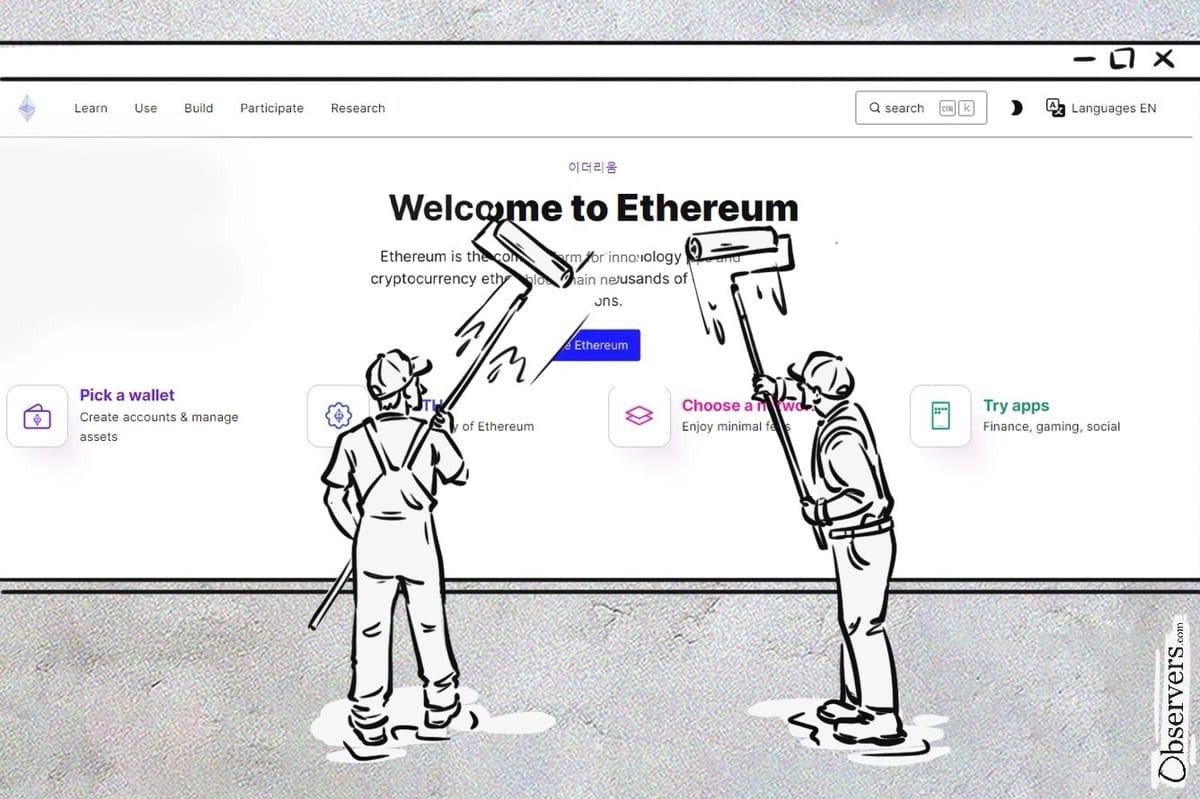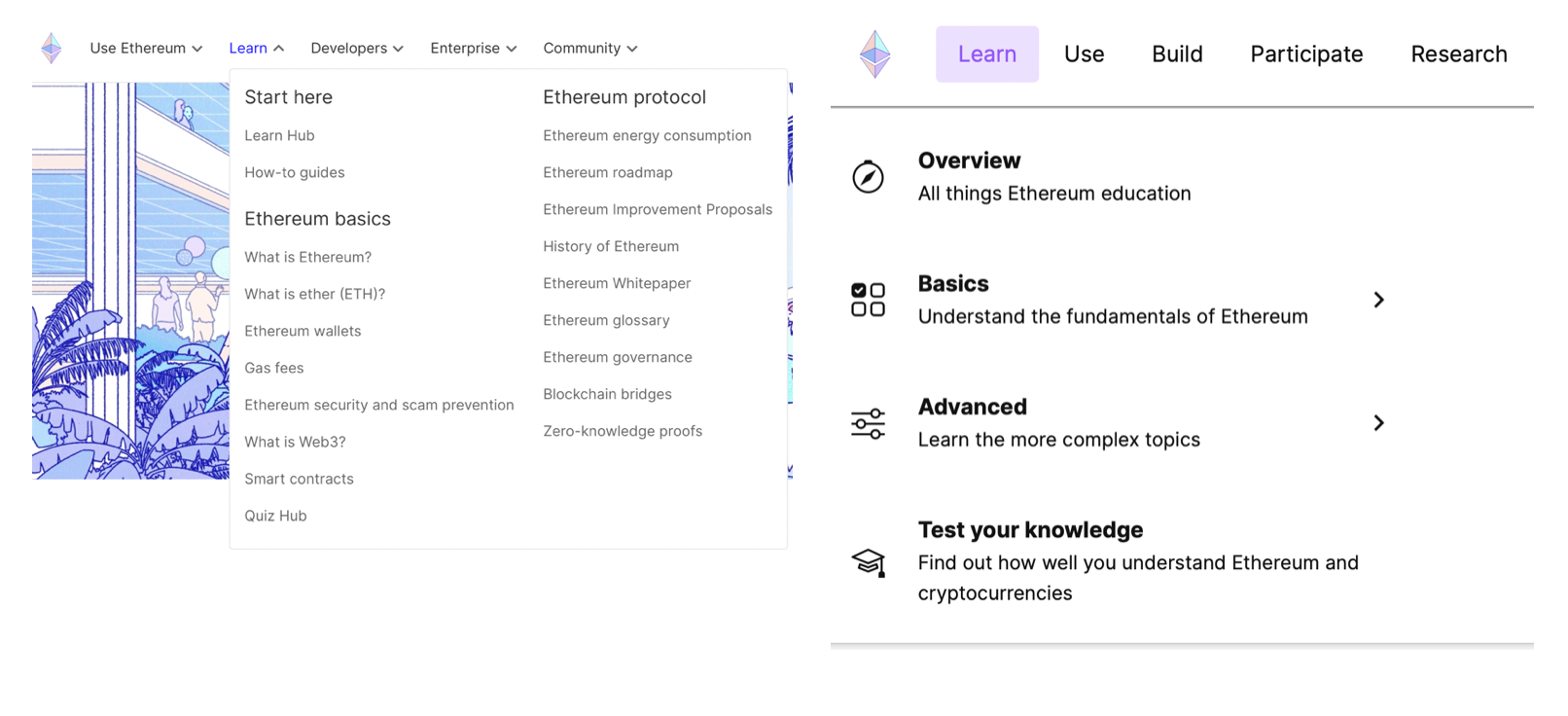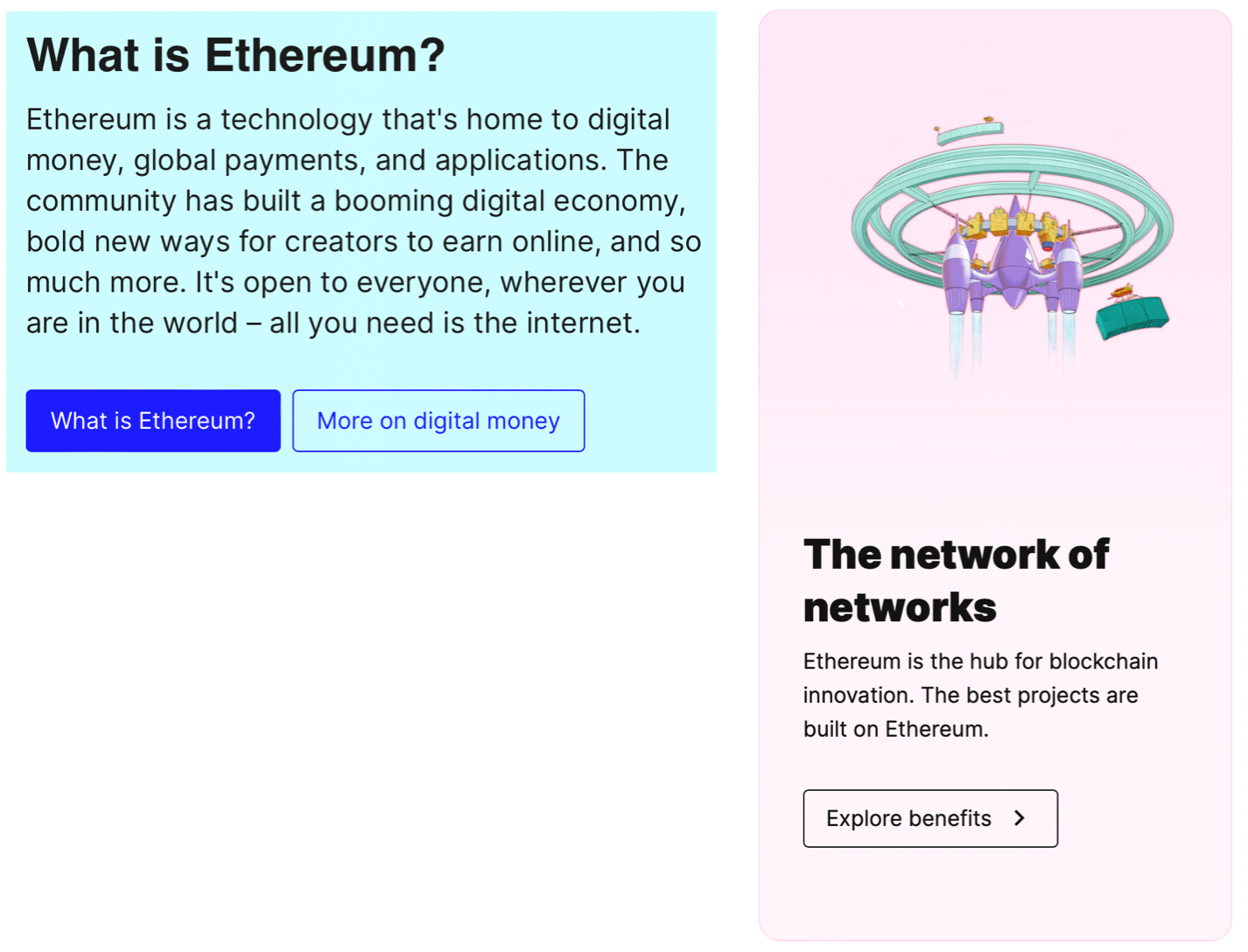
One of the most visited websites of Web3, ethereum.org, has upgraded its website.
The changes, concluded by the Ethereum developer community on September 20, are part of an ongoing effort to deliver the most accurate and reliable educational material about the largest platform of the ecosystem and teach new users how to navigate it.
The design switches are small, but in an economy where attention is the most scarce commodity, subtle changes matter a lot.
The New Website
The new homepage interface is simpler. Big chunks of text were made shorter; actionable everyday words replaced niche terminology, and there is more focus on the learning journey, both visually and textually.


A new slogan was added to the main page: “A new way to use the internet,” stepping over the Web2 vs Web3 distinction set forward by Ethereum co-founder Gavin Wood shortly after the blockchain went live to the public.

A section on stablecoins, titled “crypto without volatility,” was added to the main page. While the information was already on the website under the “learn” menu, the change reflects the growing interest in stablecoins, which are currently one of the main use cases of cryptocurrencies.
Focus on the Global Community And L2s
From 9 to August 18, the Ethereum community organized a “Translatathon.” The event was held both online and in hubs in cities around the world, as protocol users came together to translate Ethereum terminology, resulting in 2.53 million words being translated.
In making the educational material available in multiple languages, the project showcases the global focus of the Ethereum community. It opens a reliable information channel for users who don’t speak English (the lingua franca of blockchain) fluently.
Pages regarding Layer 2 have been altered in line with the roadmap for the Ethereum website on Github, which lays out the plan to “implement L2-focused changes to our Layer 2, wallets, apps, and learn pages."
Building on the progress of previous months, these changes are intended to help onboard users to the networks that exist on top of Ethereum.
They reflect the shift in the Ethereum ecosystem that followed the Dencun upgrade in January. With the introduction of blobs, the fees of Layer 2's decreased significantly, and activity surged.
Still Much Work To Do
While some parts of the website are being revamped, others have remained untouched, such as the page on decentralized applications, which desperately needs an update.
On it, the NFT market OpenSea is put on a pedestal together with Uniswap, Gods Unchained, and ENS, even as it is now only a shadow of what it once was. The prediction market Augur continues to be listed even though it doesn’t exist anymore, while Convex gets two seats in the pantheon. No games, not even the super-popular Illuvium or Axie Infinity, are mentioned. No new projects feature and major names such as MakerDAO are absent.
Some other issues might be harder to solve.
The discussion on whether Ether is or is not money isn't just a financial one. The topic, which has put Ethereum at odds with the United States Securities and Exchange Commission and created a divide inside the ecosystem’s community, also has consequences for website design and vice versa.
On the ethereum.org GitHub, there are open discussions between members who want to erase any wording that might suggest Ether is a financial asset. Mentioning ETH as money on the official website might open the door for further legal inquiries, but changing vocabulary, such as “lend” for “supply” or “interest rate” for “fee,” might become more confusing and harder to grasp for newcomers
Why does it matter?
Navigating blockchain has become much easier than it was just two years ago, with projects prioritizing user experience and also safer thanks to the efforts of governments around the world in creating user-protection regulations for the industry.
Nonetheless, hacks, scams, the spread of false data, and the sharing of poisoned links still occur daily.
Having accurate, easily digestible, straightforward, and non-commercial information available can guarantee a good experience for the new wave of non-Web3 users coming into the ecosystem via Telegram mini-games, Polymarket, layer-twos, and a whole new age of blockchain-based apps and assets.

